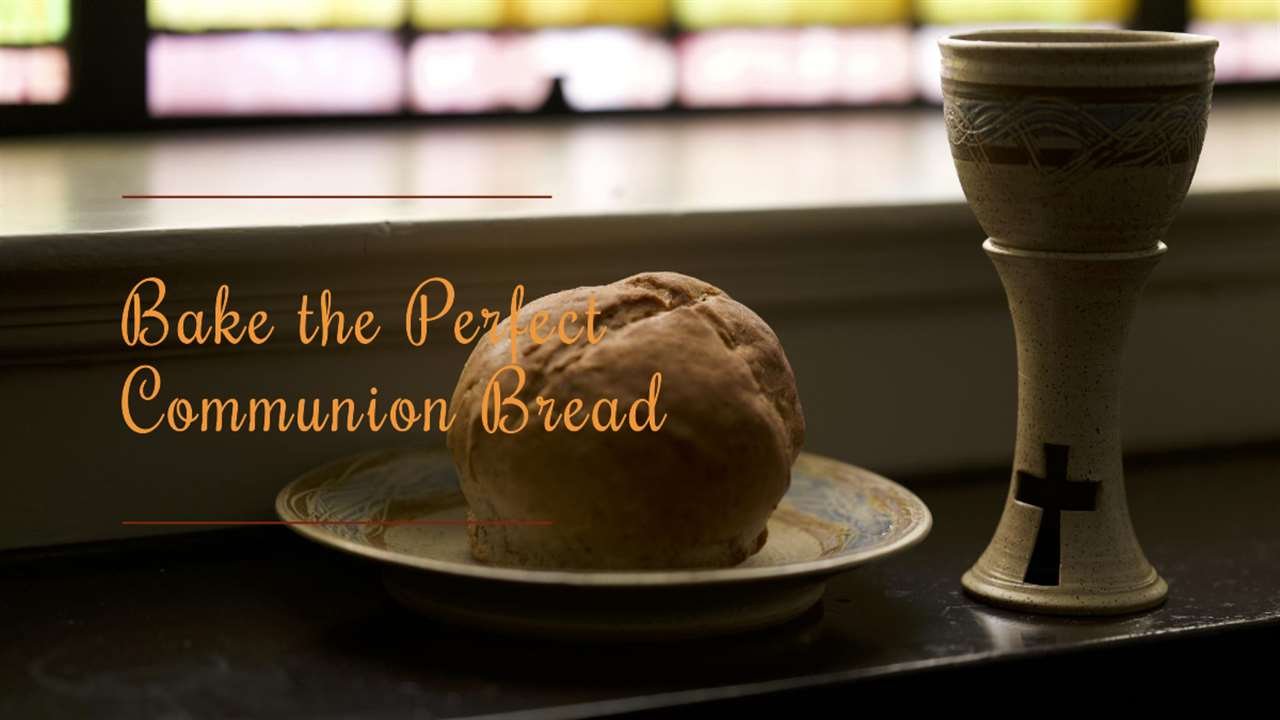As a cornerstone of Christian worship, communion holds a sacred place in the hearts of many. One integral element of this solemn ritual is the communion bread, symbolizing the body of Christ. In this article, we embark on a journey into the tradition of the Lutheran Communion Bread Recipe, exploring its significance, the art of its preparation, and the spiritual connection it fosters.
Understanding the Significance
A Symbol of Unity
Lutheran Communion Bread serves as a symbol of unity among believers. As it is shared during the sacrament, it represents the communal aspect of partaking in the body of Christ together.
Reflecting the Simplicity of Christ
Lutheran traditions often emphasize simplicity and humility. The straightforward ingredients of communion bread echo the unpretentious nature of Christ’s teachings.
Ingredients: Simple Yet Sacred
Flour – The Foundation of Faith
The primary ingredient, flour, symbolizes the foundation of faith. Just as flour is the basis of bread, faith is the bedrock of a believer’s life.
Water – The Essence of Purity
Water, a fundamental element in the recipe, represents purity and cleansing. In the same way, communion purifies the hearts of believers.
Salt – Adding Flavor to the Faith Journey
A pinch of salt enhances the flavor of the bread, mirroring the way faith adds depth and richness to life’s experiences.
Yeast – The Catalyst for Spiritual Growth
Yeast, a leavening agent, symbolizes growth and transformation. It signifies the spiritual leavening that occurs within individuals through their faith journey.
Crafting Lutheran Communion Bread: A Step-by-Step Guide
Step 1: Gather Your Ingredients
- Flour: Start with 3 cups of all-purpose flour, representing the simplicity and universality of Christ’s message.
- Water: Add 1 cup of warm water, signifying the purity of Christ’s teachings and the cleansing power of communion.
- Salt: Introduce 1 teaspoon of salt, symbolizing the flavor that faith brings to life.
- Yeast: Use 2 1/4 teaspoons of active dry yeast, representing spiritual growth and transformation.
Step 2: Kneading with Devotion
- Mixing the Ingredients: Combine the flour, water, salt, and yeast in a large bowl, creating a unified mixture.
- Kneading the Dough: Turn the dough onto a floured surface and knead it, infusing the process with devotion and prayer.
Step 3: Rising in Faith
- First Rise: Place the kneaded dough in a greased bowl, covering it with a cloth, and let it rise for about an hour. This rise symbolizes the growth and expansion of one’s spiritual journey.
- Shaping the Loaf: Punch down the risen dough and shape it into a simple, round loaf, reminiscent of the humility and purity of Christ.
- Second Rise: Allow the shaped dough to rise again for about 30 minutes, reflecting the ongoing spiritual development.
Step 4: Baking with Reverence
- Preheat the Oven: Set your oven to 375°F (190°C) as the bread undergoes its final rise, preparing to be transformed by heat.
- Golden Transformation: Bake the bread for 20-25 minutes until it turns golden brown, symbolizing the spiritual transformation that occurs through faith.
The Spiritual Connection
Communion as a Sacred Act
The act of breaking and sharing Lutheran Communion Bread is deeply spiritual. It connects believers not only to the teachings of Christ but also to each other, fostering a sense of community.
Mindful Consumption
As believers partake in the bread, they are encouraged to do so with mindfulness and gratitude, reflecting on the sacrifice of Christ and the significance of communion in their spiritual journey.
FAQs: Navigating the Communion Bread Ritual
Q1: Can I use whole wheat flour for Lutheran Communion Bread?
Certainly. While traditional recipes often use all-purpose flour, whole wheat flour can be substituted for a heartier texture and added nutritional value.
Q2: Is it permissible to add honey or sugar for sweetness?
The simplicity of Lutheran Communion Bread traditionally avoids sweeteners. However, congregations may adapt recipes based on their preferences while respecting the symbolic significance of each ingredient.
Q3: Can gluten-free alternatives be used for those with dietary restrictions?
Yes, gluten-free alternatives can be explored to accommodate individuals with dietary restrictions, ensuring that the sacred act of communion is inclusive.
Q4: How should leftover communion bread be handled?
Leftover bread should be treated with reverence. Many churches choose to dispose of unconsumed bread respectfully, such as burying it or returning it to the earth.
Q5: Can the communion bread recipe be adapted for a larger congregation?
Absolutely. The recipe can be scaled up to accommodate the size of the congregation while maintaining the simple yet sacred nature of Lutheran Communion Bread.
Conclusion: Lutheran Communion Bread Recipe
In conclusion, the ritual of preparing and sharing Lutheran Communion Bread is a profound act that bridges the physical and spiritual realms. Through the simplicity of its ingredients and the sacredness of its consumption, the communion bread ritual deepens the connection between believers and the teachings of Christ. So, as you knead the dough, may your heart be filled with devotion, and as you break the bread, may your spirit be nourished with the essence of faith.
For more ideas, recipes, and cooking tips and tricks, please visit us at Lees Donut Shop.

